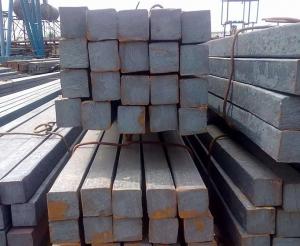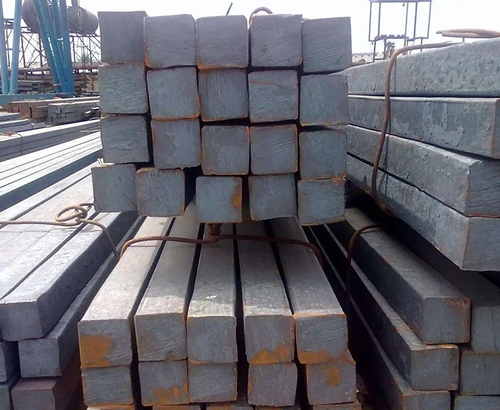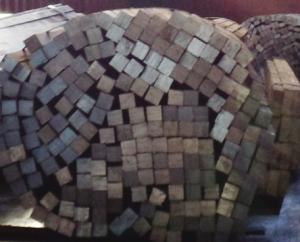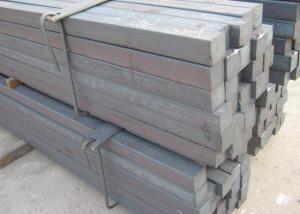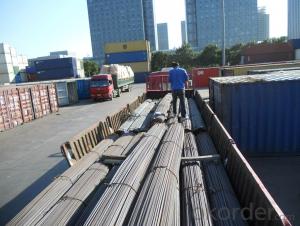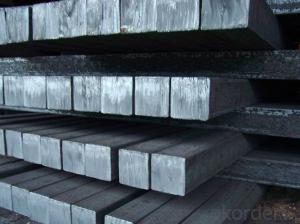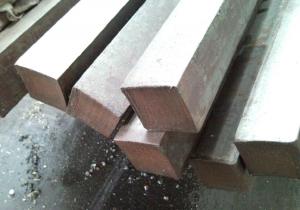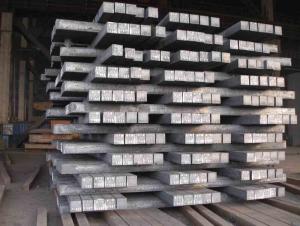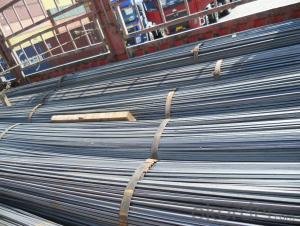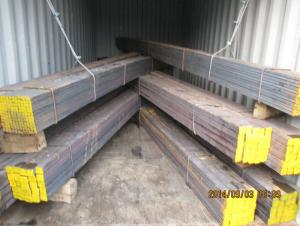hot rolled steel square bar square steel steel billet
- Loading Port:
- Tianjin
- Payment Terms:
- TT OR LC
- Min Order Qty:
- 25 m.t.
- Supply Capability:
- 200000 m.t./month
OKorder Service Pledge
Quality Product, Order Online Tracking, Timely Delivery
OKorder Financial Service
Credit Rating, Credit Services, Credit Purchasing
You Might Also Like
Specification
Standard:
ASTM,JIS,GB,EN
Technique:
Hot Rolled
Shape:
Rectangular,Square
Surface Treatment:
Black
Steel Grade:
Q195,Q235B
Thickness:
8-150
Length:
1-12m or customized
Net Weight:
0.502-176.76kg/m
We supply ms equal & unequal angle bar, channel bar,jis channel, upn, steel i beam,h beam, ipe, ipeaa, steel sheet pile, flat bar, hollow section, tmt bar, wire rod, binding wire, wire mesh, hrc, CRC, gi coil, ppgi, roofing sheet, chequered coil & plates, medium plate, scaffolding systems, prefabricated container houses etc. Also for metal & steel processing.
If you are in the market for any steel products, please feel free to contact us
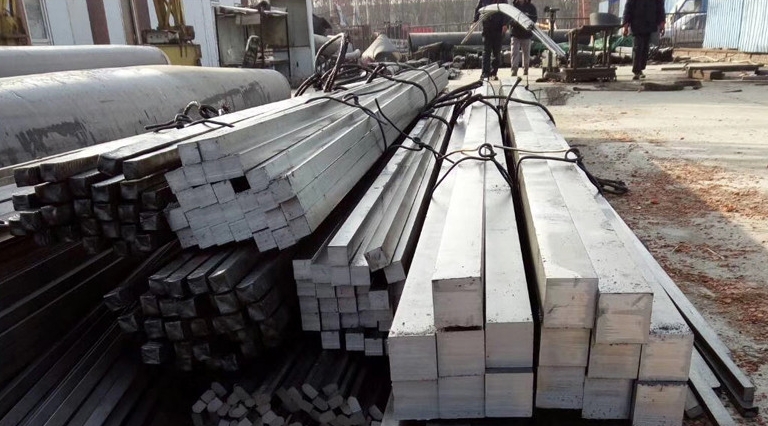
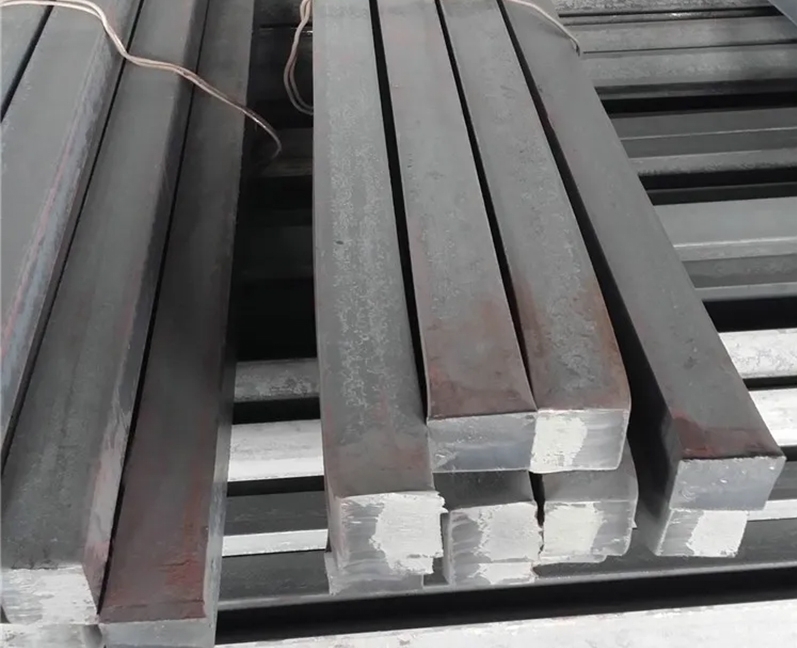
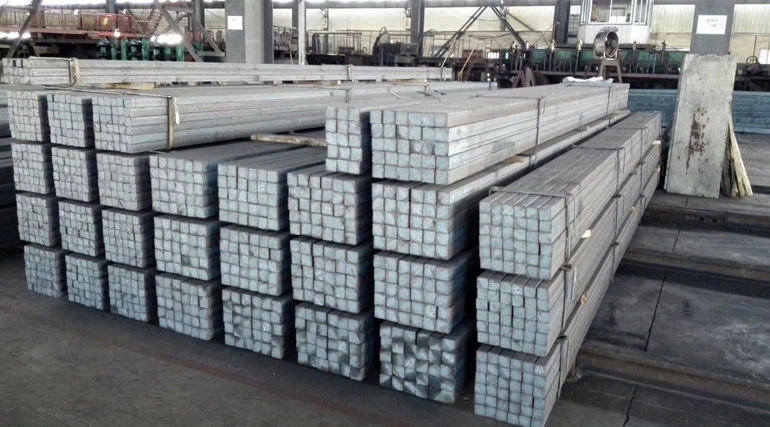
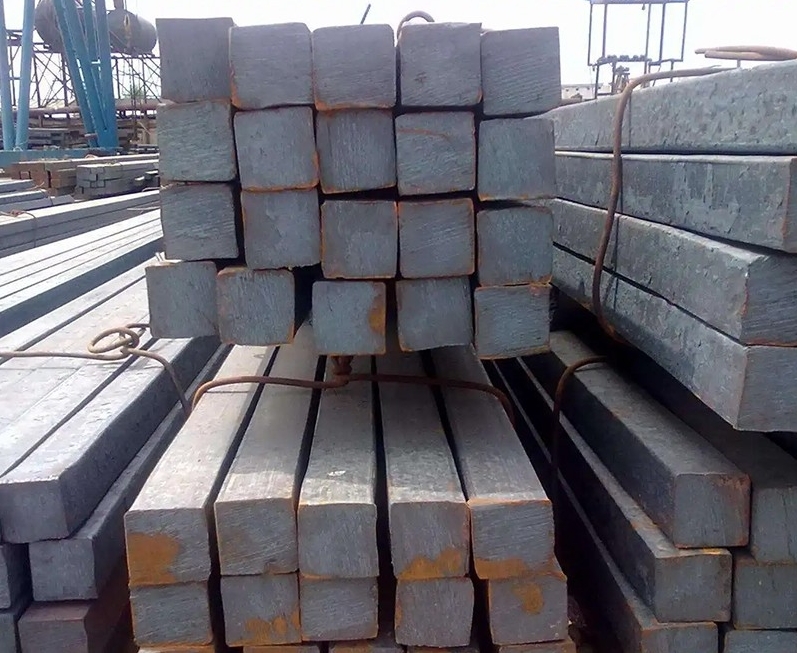
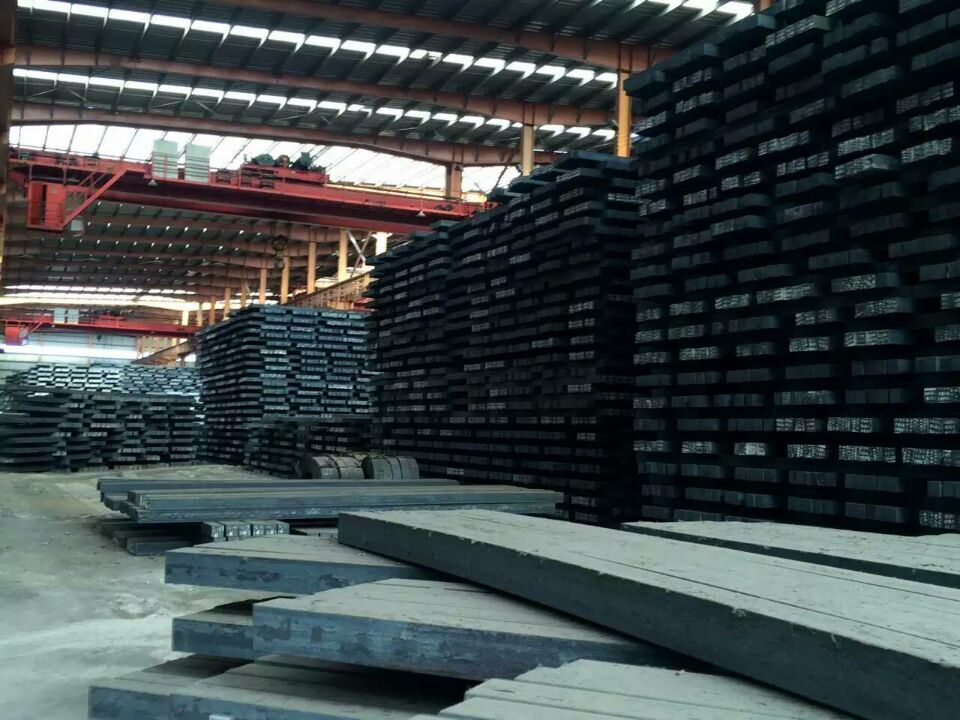

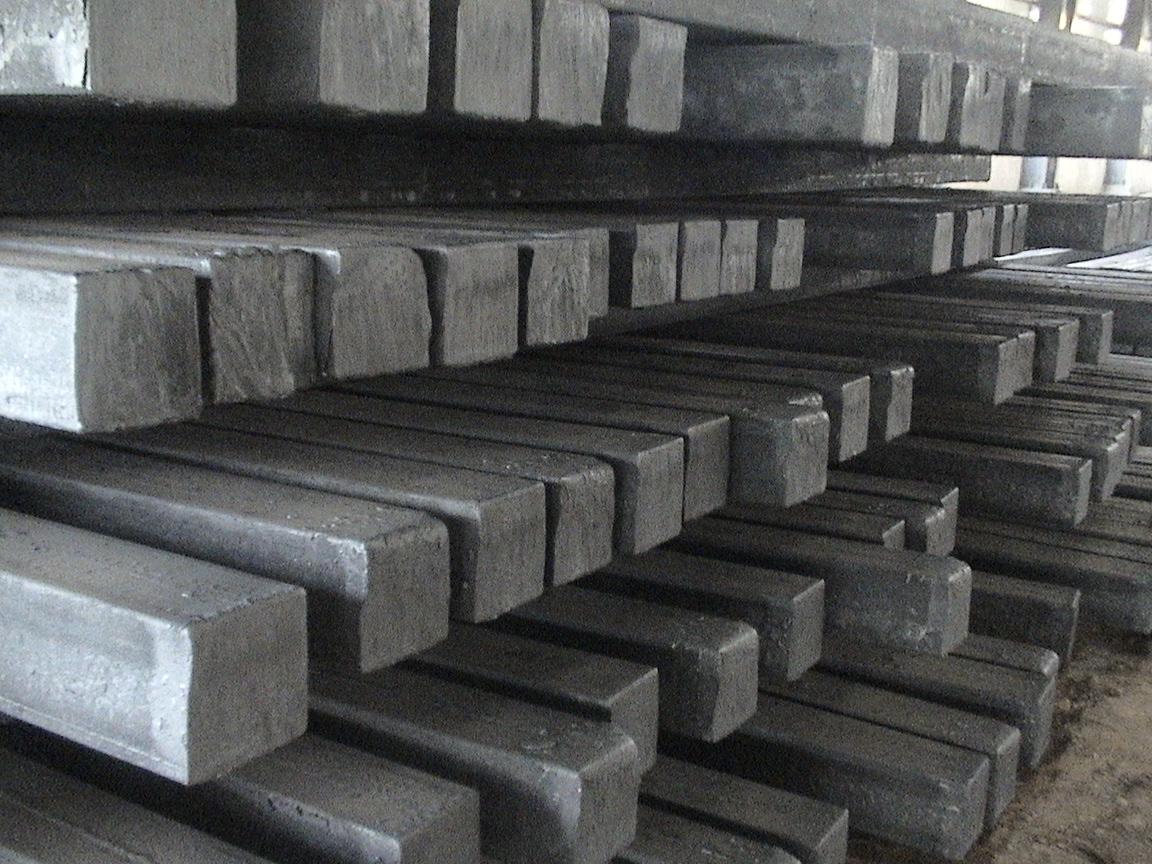
- Q: Can a steel square be used for framing a building?
- Framing a building can be accomplished using a steel square. These versatile tools, also referred to as framing squares or carpenter squares, are commonly utilized in construction and carpentry. Made of steel, they possess a 90-degree angle, along with markings and measurements along the edges. Although traditional framing squares are typically crafted from aluminum or steel and are frequently employed in wood framing, steel squares are also suitable for framing buildings constructed from steel or other materials. The robust construction of a steel square ensures its durability and dependability for a variety of framing tasks. It can be utilized for accurately laying out and marking angles, measuring and verifying squareness, and guaranteeing precise cuts and joints during the framing process. Steel squares prove useful for determining the squareness of walls, verifying the alignment of framing members, and establishing the positions of studs, rafters, and other structural elements. They can also be utilized to mark and cut intricate shapes, such as notches and birdsmouths, on framing materials. In conclusion, regardless of the material employed, a steel square serves as a valuable tool for framing a building. Its precision, resilience, and versatility render it an indispensable instrument for any construction project.
- Q: How do you use a steel square to measure the thickness of a board?
- To measure the thickness of a board using a steel square, follow these steps: 1. Choose a steel square with a 90-degree angle, also called a framing square. This tool is typically made of steel and has a long arm and a shorter perpendicular arm. 2. Secure the board vertically against a flat surface like a wall or workbench, ensuring it remains stable and doesn't wobble. 3. Position the long arm of the steel square against the board, making sure it is perpendicular to the board's surface. 4. Slide the square downwards until it rests on top of the board, with the shorter arm extending beyond the board's edge. 5. Note the point where the shorter arm meets the board's edge. This will indicate the board's thickness. 6. Record the measurement shown on the shorter arm, which should represent the board's thickness. It's crucial to ensure the correct positioning of the steel square and the straightness and stability of the board in order to obtain an accurate measurement. Additionally, some steel squares may have extra markings or features that can assist with other measurements or calculations, so it can be advantageous to familiarize yourself with the specific square being used.
- Q: Can a steel square be used for checking the plumbness of columns?
- No, a steel square cannot be used for checking the plumbness of columns. A steel square, also known as a framing square, is a tool primarily used in carpentry and woodworking for measuring and marking right angles. It is not designed or calibrated for vertical alignment or determining the plumbness of objects such as columns. To check the plumbness of columns, a plumb bob or a level would be more suitable tools. A plumb bob is a pointed weight that hangs from a string, allowing for precise vertical alignment. By observing the position of the plumb bob in relation to the column, one can determine if it is perfectly plumb or if any adjustments need to be made. Alternatively, a level can also be used to check the plumbness of columns. A level is a tool with a liquid-filled tube and a bubble that indicates whether a surface is level or plumb. By placing the level against the column and observing the position of the bubble, one can determine if the column is perfectly vertical or if any adjustments are required.
- Q: How do you use a steel square for marking and cutting tenons with shoulders?
- To use a steel square for marking and cutting tenons with shoulders, start by measuring and marking the width of the tenon on the face of the workpiece. Next, position the steel square against the edge of the workpiece and align the tenon shoulder line with the edge of the square. Use a pencil or marking knife to trace along the edge of the square, marking the shoulder line onto the workpiece. Repeat this process on all sides of the tenon. Finally, use a saw to cut along the marked lines, ensuring the cuts are perpendicular to the face and edge of the workpiece.
- Q: How do you use a steel square to determine angles for picture frames?
- To use a steel square to determine angles for picture frames, you can start by placing the square against the corner of the frame. Then, align one edge of the square with the side of the frame. By reading the scale on the square, you can determine the angle at which the frame needs to be cut. This will help you achieve precise and accurate angles for your picture frames.
- Q: What is the difference between a framing square and a steel square?
- Carpentry and construction employ both a framing square and a steel square, yet their designs and purposes differ. A framing square, a traditional tool, comprises two arms meeting at a right angle to form an L-shape. Typically crafted from wood, aluminum, or plastic, it measures 24 inches in length for the longer arm, known as the blade, and 16 inches for the shorter arm, called the tongue. Framing squares excel at laying out and measuring right angles, marking and cutting rafters, and assessing squareness in construction and framing endeavors. Contrarily, a steel square, also referred to as a combination square or try square, proves more versatile and precise. Manufactured entirely from steel, it possesses a 12-inch blade alongside a sliding head. This head easily locks into desired angles, enabling the square to measure and mark angles apart from 90 degrees. Steel squares often integrate extra features like levels, scribes, or protractors, rendering them invaluable for an extensive array of layout and measurement tasks. In conclusion, the divergence between a framing square and a steel square lies in their design and functionality. A framing square, a fundamental L-shaped tool, chiefly serves the purpose of measuring and marking right angles in framing and construction projects. Conversely, a steel square, composed wholly of steel and equipped with a sliding head, allows for locking at various angles, making it suitable for a broader range of layout and measurement tasks.
- Q: How do you use a steel square to measure the width of a worktable?
- To use a steel square to measure the width of a worktable, you can follow these steps: 1. Ensure the worktable is clean and free from any objects that may obstruct the measurement process. 2. Place the steel square on one end of the worktable, positioning it flush against the edge. Make sure the long side of the square is aligned with the width you are trying to measure. 3. Hold the steel square firmly in place, ensuring that it doesn't move or shift during the measurement. 4. Look at the measurement markings on the steel square and identify the corresponding width measurement. 5. Read the measurement on the steel square where it aligns with the other end of the worktable. This should give you the accurate width of the worktable. 6. Take note of the measurement and repeat the process if necessary to double-check the accuracy. It's important to handle the steel square carefully and ensure it is properly aligned with the edges of the worktable to get an accurate measurement.
- Q: Are there any alternative tools to a steel square?
- Yes, there are several alternative tools to a steel square. Some commonly used alternatives include: 1. Speed Square: Also known as a rafter square, this tool has a triangular shape and is usually made of aluminum. It is specifically designed for measuring and marking angles, making it useful for carpentry and other construction projects. 2. Combination Square: This tool consists of a ruler and a pivoting head that can be set at any angle. It is widely used in woodworking and metalworking for measuring and marking straight lines, right angles, and various angles. 3. Framing Square: This square is larger than a steel square and is typically made of aluminum or steel. It is commonly used in construction for measuring and marking right angles, laying out stairs, and checking roof pitches. 4. Bevel Gauge: This tool is used for measuring and transferring angles. It consists of an adjustable blade and a handle, allowing it to be set at various angles. It is commonly used in woodworking and metalworking for creating precise angles. 5. Angle Finder: Also known as a protractor or angle gauge, this tool is used for measuring and transferring angles accurately. It typically consists of a round disc with a scale and a pivoting arm or blade. These alternative tools provide different functionalities and features, catering to specific needs in various industries. While a steel square is versatile and widely used, these alternatives offer additional options for specific tasks and angles.
- Q: How do you use a steel square to scribe a line?
- Before scribing a line with a steel square, it is important to familiarize yourself with the markings and measurements on the square. Typically, a steel square consists of two arms joined at a right angle, with one arm longer than the other. The longer arm is referred to as the blade, while the shorter arm is known as the tongue. To start, position the steel square on the material where you want to scribe a line, making sure that the tongue runs parallel to the edge of the material. This alignment is crucial for achieving accuracy. Securely hold the square in place to prevent any shifting while scribing the line. Next, select a sharp pencil or scribe tool and align it with the desired measurement on the blade. This measurement will depend on the width or length you want the line to be. Once the pencil or scribe tool is aligned, hold it perpendicular to the material and press it against the edge of the blade. Now, carefully slide the pencil or scribe tool along the blade's edge, maintaining consistent pressure. This will create a precise line on the material, following the square's angle. Keep scribing the line until you reach the desired length or position. Remember to proceed with caution and take your time to ensure accuracy while scribing the line. It can be beneficial to practice on scrap material before attempting to scribe lines on your actual workpiece. Moreover, always double-check your measurements and ensure that the square is properly aligned before starting the scribing process.
- Q: How do you determine the thickness of a steel square?
- To determine the thickness of a steel square, you can use a few different methods. One common method is to use a caliper, which is a tool specifically designed for measuring thickness. Place the square between the caliper's jaws and gently close them until they touch both sides of the square. The measurement displayed on the caliper will indicate the thickness of the steel square. Another method is to use a micrometer, which is a more precise tool for measuring thickness. Similar to the caliper, place the square between the micrometer's jaws and tighten them until they firmly grip the square. The measurement displayed on the micrometer will provide an accurate reading of the steel square's thickness. If you don't have access to specialized measuring tools, you can also use a ruler or tape measure. However, keep in mind that these tools may not provide as accurate of a measurement. Place the square on a flat surface and measure the distance from one side to the other using the ruler or tape measure. This measurement will give you an approximation of the steel square's thickness. It is important to note that when using any measuring tool, it is crucial to handle the square gently and ensure that it is properly aligned and flat on the measuring surface. Additionally, always double-check your measurement to ensure accuracy.
Send your message to us
hot rolled steel square bar square steel steel billet
- Loading Port:
- Tianjin
- Payment Terms:
- TT OR LC
- Min Order Qty:
- 25 m.t.
- Supply Capability:
- 200000 m.t./month
OKorder Service Pledge
Quality Product, Order Online Tracking, Timely Delivery
OKorder Financial Service
Credit Rating, Credit Services, Credit Purchasing
Similar products
Hot products
